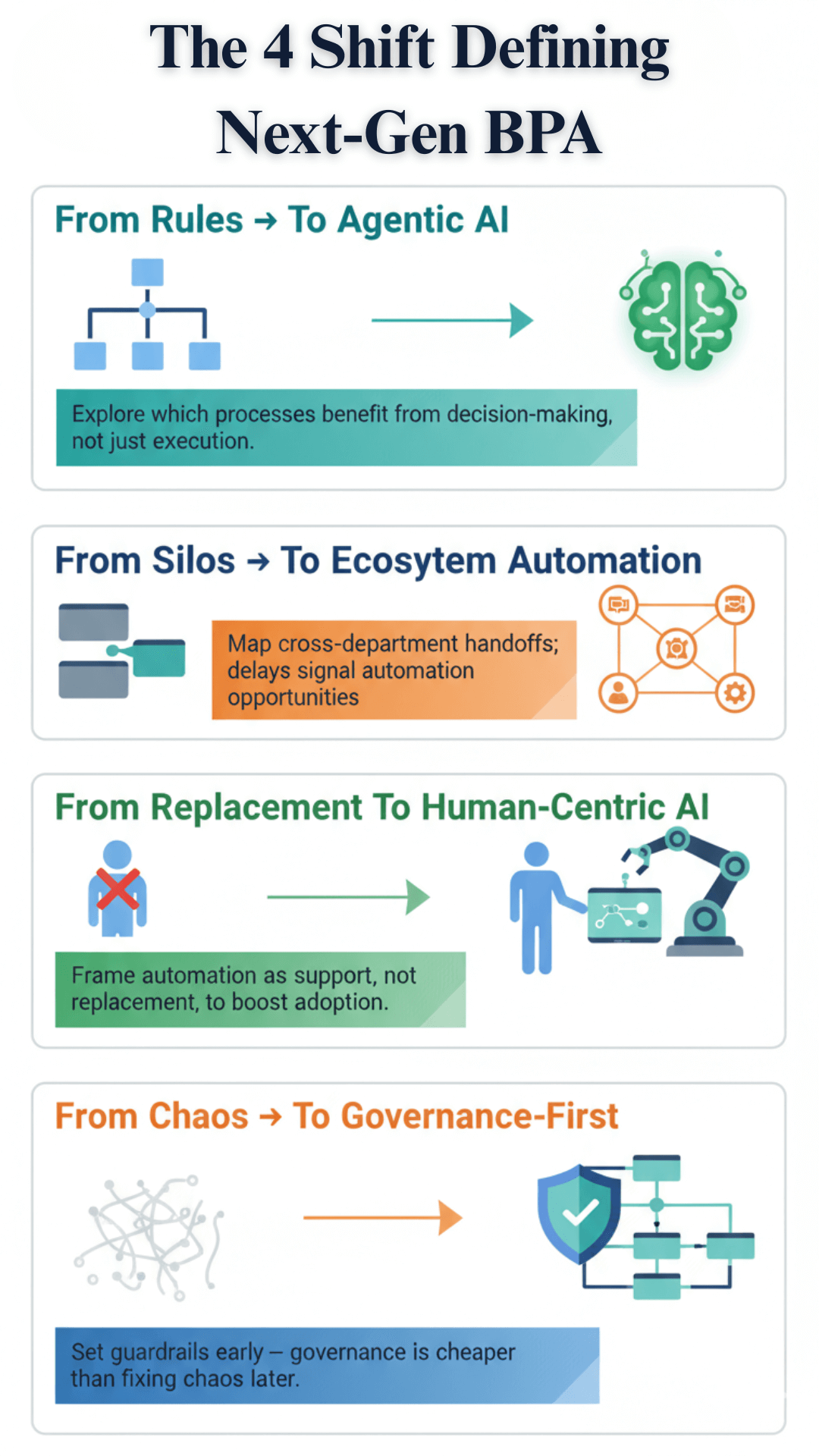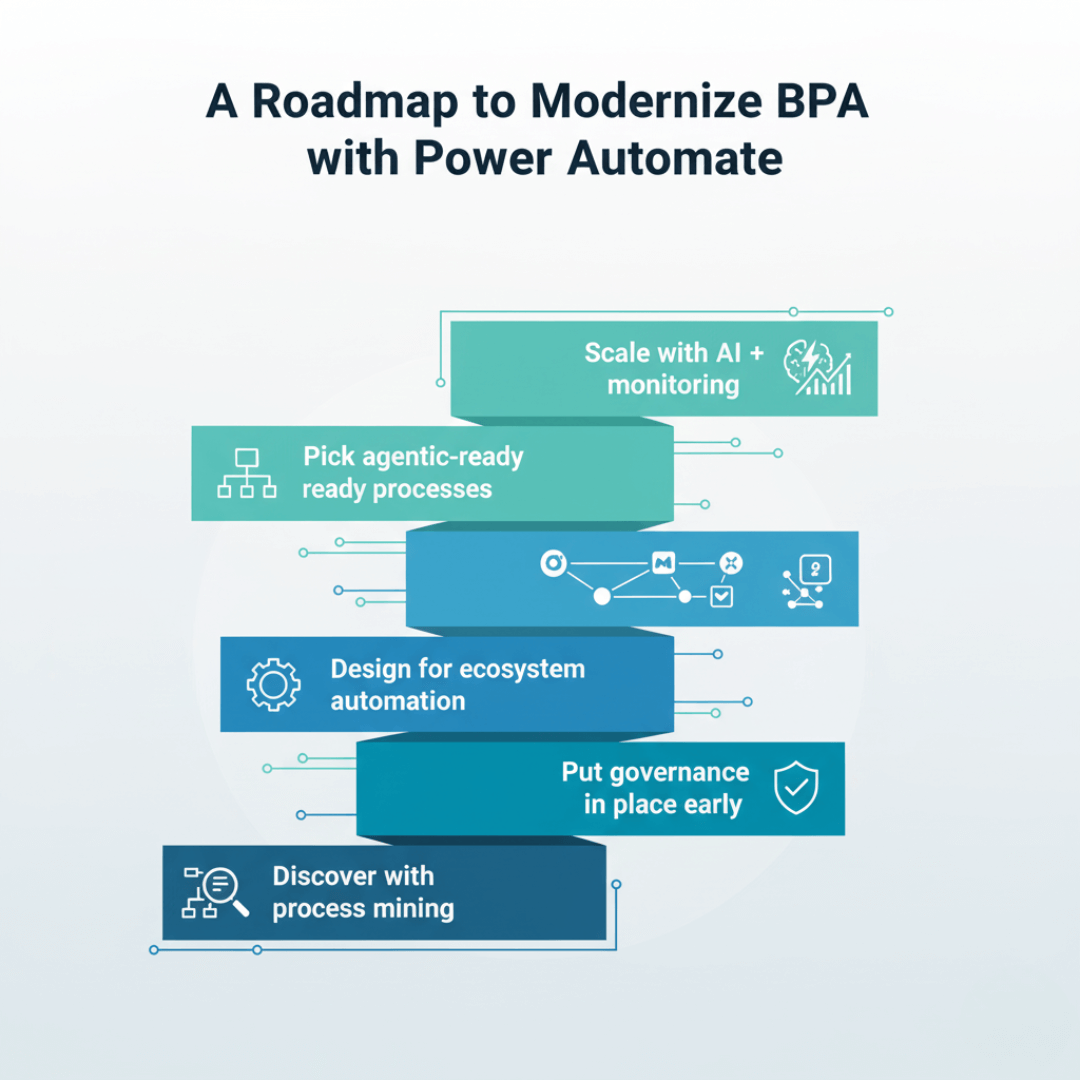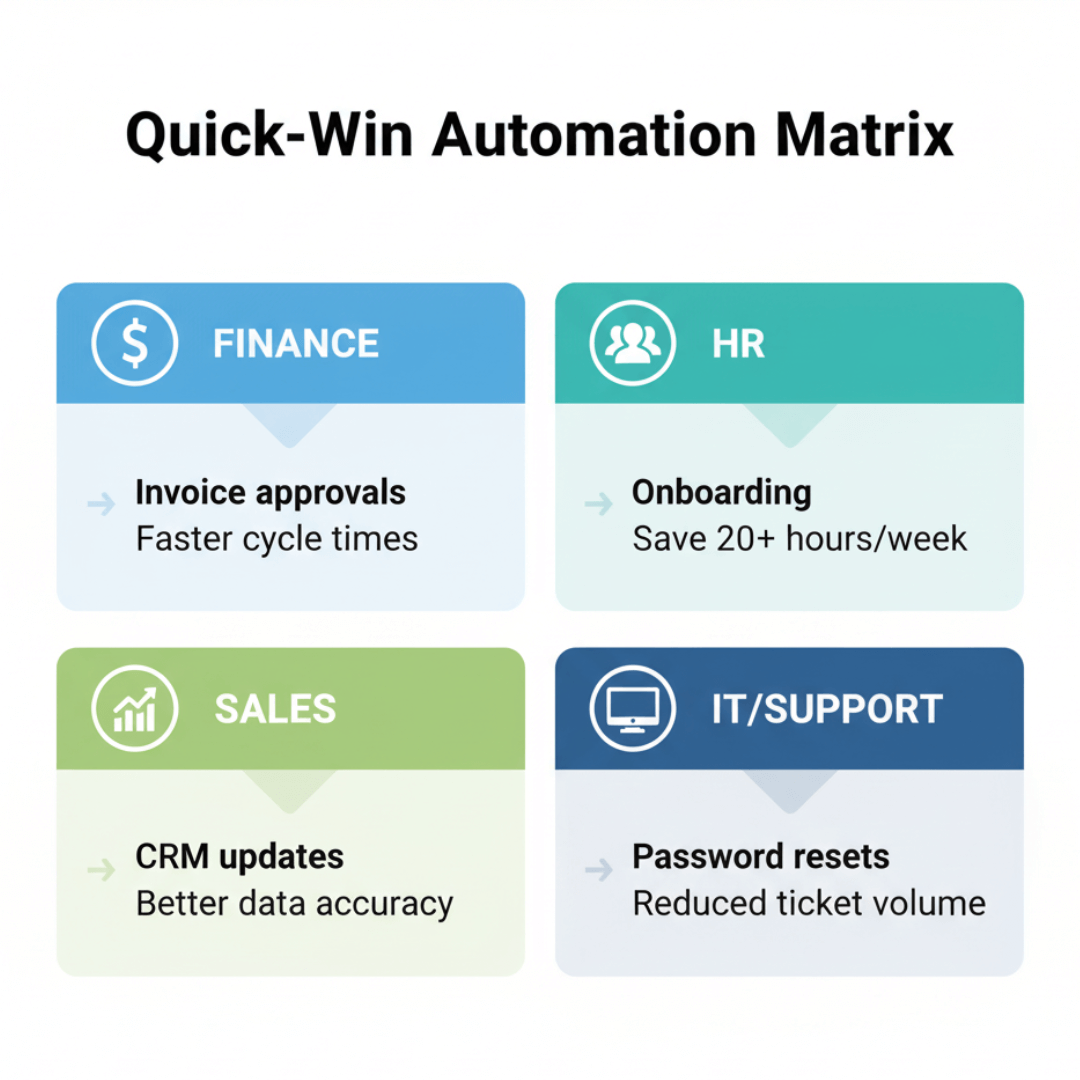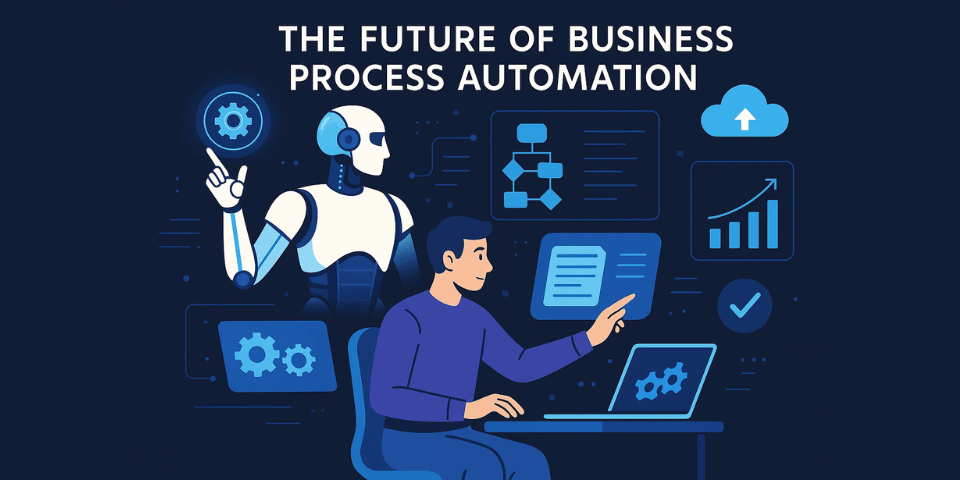Introduction: Why the Future of BPA Matters Now
If there’s one lesson, I’ve learned in 20+ years of working with enterprises, it’s this: the companies that thrive aren’t the ones who buy the most automation tools, but the ones who build automation into their culture.
Business Process Automation (BPA) has moved far beyond simple task automation. We’re now talking about agentic AI, ecosystem-wide orchestration, and a shift from “efficiency projects” to strategic must-haves.
According to Gartner, by 2026, companies that fully embrace hyper automation will reduce operational costs by at least 30%. That’s no longer a “nice-to-have” — it’s survival.
What Next-Gen BPA Looks Like (2025–2027)
When I think about where Business Process Automation (BPA) is heading, one thing is clear: it’s no longer about speeding up routine work — it’s about building organizations that can adapt quickly and stay resilient in the face of change. Let’s unpack the shifts I see shaping the next few years.

From rules to agentic AI: In the past, automation followed rules. Now, AI-driven agents can make context-aware decisions.
👉 Takeaway: Start exploring which of your processes could benefit from decision-making, not just execution.
Ecosystem automation replaces silos: Orchestrating across the entire ecosystem — apps, APIs, people, and bots.
👉 Takeaway: Map your processes across departments and look for handoffs that cause delays — these are prime automation opportunities.
Human-centric AI: Automation is here to augment people, not replace them.
👉 Takeaway: Frame automation in your team as a support system, not a replacement, to encourage adoption.
Governance moves to the front: Automation without governance is chaos, leading to compliance issues and bad data.
👉 Takeaway: Even if you’re starting small, set basic guardrails now — policies, oversight, and ownership. It’s far easier to scale responsibly than to fix chaos later.
Where Power Automate Fits in This Future
- Low-code workflow automation: Example: reduced approval cycles from 5 days to 1.
- RPA/desktop flows for legacy systems: Automate when APIs aren’t available.
- Process mining: Discover inefficiencies and measure ROI.
- AI + Copilot: Build workflows with natural language.
- Security, auditing, and analytics: Controls, logs, and policies balance flexibility and governance.
- Deep integration in Microsoft ecosystem: Power Automate ties into Teams, SharePoint, Dynamics, and Azure.
From my consulting work with global clients, I’ve noticed companies that embrace low-code scale automation faster without overwhelming IT.
A Roadmap to Modernize BPA with Power Automate

Modernizing Business Process Automation isn’t something you can flip on overnight. It needs a roadmap — a clear, phased approach that balances quick wins with long-term governance. Here’s how I recommend tackling it:
Step 1 — Discover with process mining
Don’t start with assumptions. Use Power Automate’s process mining to see where time and effort are actually being wasted. It will highlight bottlenecks you didn’t know existed and give you a fact-based list of where automation can have the biggest impact.
👉 Tip: Run mining on just one department first (like Finance or HR) before expanding company-wide.
Step 2 — Pick “agentic-ready” processes
Look for processes that are high-volume, rules-driven, and cross multiple systems. These are the best candidates because they deliver fast ROI today and can benefit from AI enhancements later.
👉 Tip: If your team constantly complains about a repetitive approval cycle, that’s usually a good starting point.
Step 3 — Design for ecosystem automation
Don’t stop at department-level fixes. The future of BPA is ecosystem-wide. For example, onboarding isn’t just HR — it touches IT, Finance, and Compliance. Design workflows that cut across these boundaries.
👉 Tip: Map out every handoff between teams; those handoffs are often where the biggest delays live.
Step 4 — Put governance in place early
This is the step most companies skip — and regret later. Without policies, oversight, and clear ownership, automation turns into chaos. From my experience, projects fail not because of technology, but because no one sets guardrails.
Deloitte research shows that organizations with strong governance and a dedicated Center of Excellence are far more likely to scale automation successfully compared to those without structured oversight.”
👉 Tip: Even if you only have a handful of automations, create a lightweight Center of Excellence (CoE) with simple rules on who can build, how changes are reviewed, and how usage is tracked.
Step 5 — Scale with AI and continuous monitoring
Automation isn’t “set it and forget it.” Over time, you’ll want to layer in AI Copilot for natural language flows, use mining to monitor outcomes, and continuously refine processes as business needs evolve.
👉 Tip: Schedule quarterly reviews of automated processes to check if they’re still delivering value — and update them when business rules change.
High-Impact Use Cases to Target First
One of the biggest questions I get is: “Where should we start?” The truth is, not every process is worth automating first. You want to focus on high-volume, repeatable tasks that touch multiple teams and create real pain when delayed. Here are a few areas that consistently deliver quick wins with Power Automate:

- Finance – Processes like invoice approvals and expense reporting are ripe for automation. They’re repetitive, rules-based, and delays here directly impact cash flow. Automating these not only saves time but also reduces costly errors.
- HR – Onboarding and offboarding are great candidates because they involve multiple handoffs — HR, IT, and Finance all need to take action. I’ve seen clients save 20+ hours a week by automating onboarding, while giving new hires a smoother first-day experience.
- Sales – Things like lead routing, quote approvals, and deal desk requests often slow revenue teams down. Automating them keeps deals moving and ensures no opportunity is lost because of bottlenecks
- IT & Support – Every IT team I’ve worked with struggles with repetitive requests like password resets or ticket triage. Automating these frees up IT staff for more strategic projects, instead of being buried in routine fixes.
According to McKinsey, up to 30% of work hours in the U.S. economy could be automated by 2030, especially with the rise of generative AI.”
👉 Takeaway: Start with processes that are repetitive, cross-functional, and high impact. Once you’ve proven value there, it becomes much easier to expand automation into more complex areas.
Measuring Value and ROI
Cycle time reduction, error rates, human hours saved, and customer satisfaction.
McKinsey projects that by 2030, generative AI could automate tasks representing up to 30% of total work hours in the US economy.
Risks and Mitigations in the AI Era
AI can drift or make poor decisions. Mitigations include piloting, keeping humans in the loop, and audit trails.
The Road Ahead (2026–2027)
Expect agentic orchestration, governance standards, and more AI-native features. The goal: ecosystems that learn, adapt, and deliver outcomes.
Closing Thought
The future of automation isn’t about replacing people or chasing the newest tools. It’s about building resilient, adaptive organizations that can respond quickly to change. Companies that start small, put governance in place, and scale responsibly with platforms like Power Automate will be the ones setting the pace by 2027.







